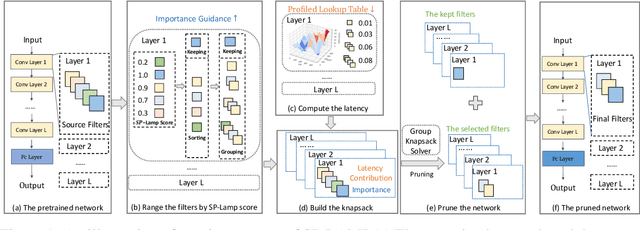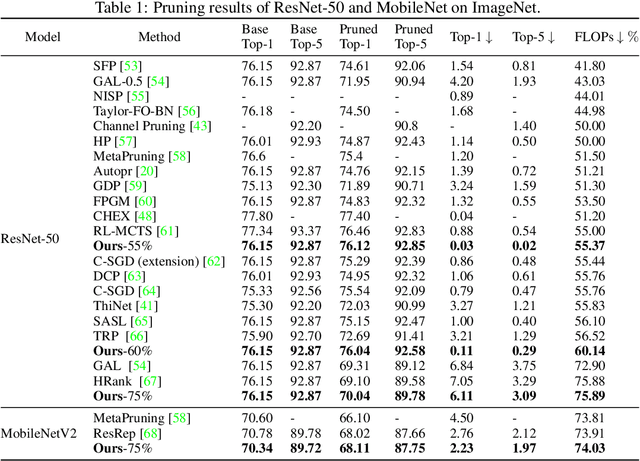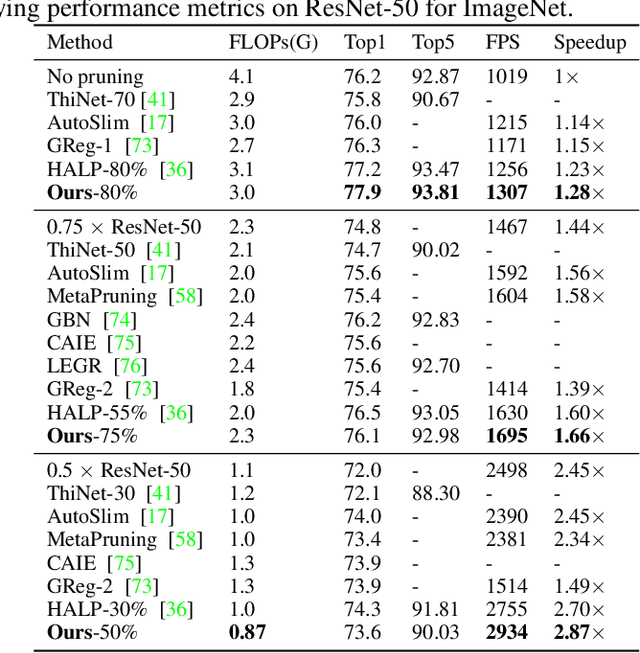Liang Hou
Score Augmentation for Diffusion Models
Aug 11, 2025Abstract:Diffusion models have achieved remarkable success in generative modeling. However, this study confirms the existence of overfitting in diffusion model training, particularly in data-limited regimes. To address this challenge, we propose Score Augmentation (ScoreAug), a novel data augmentation framework specifically designed for diffusion models. Unlike conventional augmentation approaches that operate on clean data, ScoreAug applies transformations to noisy data, aligning with the inherent denoising mechanism of diffusion. Crucially, ScoreAug further requires the denoiser to predict the augmentation of the original target. This design establishes an equivariant learning objective, enabling the denoiser to learn scores across varied denoising spaces, thereby realizing what we term score augmentation. We also theoretically analyze the relationship between scores in different spaces under general transformations. In experiments, we extensively validate ScoreAug on multiple benchmarks including CIFAR-10, FFHQ, AFHQv2, and ImageNet, with results demonstrating significant performance improvements over baselines. Notably, ScoreAug effectively mitigates overfitting across diverse scenarios, such as varying data scales and model capacities, while exhibiting stable convergence properties. Another advantage of ScoreAug over standard data augmentation lies in its ability to circumvent data leakage issues under certain conditions. Furthermore, we show that ScoreAug can be synergistically combined with traditional data augmentation techniques to achieve additional performance gains.
Boosting Resolution Generalization of Diffusion Transformers with Randomized Positional Encodings
Mar 24, 2025Abstract:Resolution generalization in image generation tasks enables the production of higher-resolution images with lower training resolution overhead. However, a significant challenge in resolution generalization, particularly in the widely used Diffusion Transformers, lies in the mismatch between the positional encodings encountered during testing and those used during training. While existing methods have employed techniques such as interpolation, extrapolation, or their combinations, none have fully resolved this issue. In this paper, we propose a novel two-dimensional randomized positional encodings (RPE-2D) framework that focuses on learning positional order of image patches instead of the specific distances between them, enabling seamless high- and low-resolution image generation without requiring high- and low-resolution image training. Specifically, RPE-2D independently selects positions over a broader range along both the horizontal and vertical axes, ensuring that all position encodings are trained during the inference phase, thus improving resolution generalization. Additionally, we propose a random data augmentation technique to enhance the modeling of position order. To address the issue of image cropping caused by the augmentation, we introduce corresponding micro-conditioning to enable the model to perceive the specific cropping patterns. On the ImageNet dataset, our proposed RPE-2D achieves state-of-the-art resolution generalization performance, outperforming existing competitive methods when trained at a resolution of $256 \times 256$ and inferred at $384 \times 384$ and $512 \times 512$, as well as when scaling from $512 \times 512$ to $768 \times 768$ and $1024 \times 1024$. And it also exhibits outstanding capabilities in low-resolution image generation, multi-stage training acceleration and multi-resolution inheritance.
MTV-Inpaint: Multi-Task Long Video Inpainting
Mar 14, 2025Abstract:Video inpainting involves modifying local regions within a video, ensuring spatial and temporal consistency. Most existing methods focus primarily on scene completion (i.e., filling missing regions) and lack the capability to insert new objects into a scene in a controllable manner. Fortunately, recent advancements in text-to-video (T2V) diffusion models pave the way for text-guided video inpainting. However, directly adapting T2V models for inpainting remains limited in unifying completion and insertion tasks, lacks input controllability, and struggles with long videos, thereby restricting their applicability and flexibility. To address these challenges, we propose MTV-Inpaint, a unified multi-task video inpainting framework capable of handling both traditional scene completion and novel object insertion tasks. To unify these distinct tasks, we design a dual-branch spatial attention mechanism in the T2V diffusion U-Net, enabling seamless integration of scene completion and object insertion within a single framework. In addition to textual guidance, MTV-Inpaint supports multimodal control by integrating various image inpainting models through our proposed image-to-video (I2V) inpainting mode. Additionally, we propose a two-stage pipeline that combines keyframe inpainting with in-between frame propagation, enabling MTV-Inpaint to effectively handle long videos with hundreds of frames. Extensive experiments demonstrate that MTV-Inpaint achieves state-of-the-art performance in both scene completion and object insertion tasks. Furthermore, it demonstrates versatility in derived applications such as multi-modal inpainting, object editing, removal, image object brush, and the ability to handle long videos. Project page: https://mtv-inpaint.github.io/.
RectifiedHR: Enable Efficient High-Resolution Image Generation via Energy Rectification
Mar 04, 2025Abstract:Diffusion models have achieved remarkable advances in various image generation tasks. However, their performance notably declines when generating images at resolutions higher than those used during the training period. Despite the existence of numerous methods for producing high-resolution images, they either suffer from inefficiency or are hindered by complex operations. In this paper, we propose RectifiedHR, an efficient and straightforward solution for training-free high-resolution image generation. Specifically, we introduce the noise refresh strategy, which theoretically only requires a few lines of code to unlock the model's high-resolution generation ability and improve efficiency. Additionally, we first observe the phenomenon of energy decay that may cause image blurriness during the high-resolution image generation process. To address this issue, we propose an Energy Rectification strategy, where modifying the hyperparameters of the classifier-free guidance effectively improves the generation performance. Our method is entirely training-free and boasts a simple implementation logic. Through extensive comparisons with numerous baseline methods, our RectifiedHR demonstrates superior effectiveness and efficiency.
MITA: Bridging the Gap between Model and Data for Test-time Adaptation
Oct 12, 2024



Abstract:Test-Time Adaptation (TTA) has emerged as a promising paradigm for enhancing the generalizability of models. However, existing mainstream TTA methods, predominantly operating at batch level, often exhibit suboptimal performance in complex real-world scenarios, particularly when confronting outliers or mixed distributions. This phenomenon stems from a pronounced over-reliance on statistical patterns over the distinct characteristics of individual instances, resulting in a divergence between the distribution captured by the model and data characteristics. To address this challenge, we propose Meet-In-The-Middle based Test-Time Adaptation ($\textbf{MITA}$), which introduces energy-based optimization to encourage mutual adaptation of the model and data from opposing directions, thereby meeting in the middle. MITA pioneers a significant departure from traditional approaches that focus solely on aligning the model to the data, facilitating a more effective bridging of the gap between model's distribution and data characteristics. Comprehensive experiments with MITA across three distinct scenarios (Outlier, Mixture, and Pure) demonstrate its superior performance over SOTA methods, highlighting its potential to significantly enhance generalizability in practical applications.
Direct-a-Video: Customized Video Generation with User-Directed Camera Movement and Object Motion
Feb 05, 2024



Abstract:Recent text-to-video diffusion models have achieved impressive progress. In practice, users often desire the ability to control object motion and camera movement independently for customized video creation. However, current methods lack the focus on separately controlling object motion and camera movement in a decoupled manner, which limits the controllability and flexibility of text-to-video models. In this paper, we introduce Direct-a-Video, a system that allows users to independently specify motions for one or multiple objects and/or camera movements, as if directing a video. We propose a simple yet effective strategy for the decoupled control of object motion and camera movement. Object motion is controlled through spatial cross-attention modulation using the model's inherent priors, requiring no additional optimization. For camera movement, we introduce new temporal cross-attention layers to interpret quantitative camera movement parameters. We further employ an augmentation-based approach to train these layers in a self-supervised manner on a small-scale dataset, eliminating the need for explicit motion annotation. Both components operate independently, allowing individual or combined control, and can generalize to open-domain scenarios. Extensive experiments demonstrate the superiority and effectiveness of our method. Project page: https://direct-a-video.github.io/.
I2V-Adapter: A General Image-to-Video Adapter for Video Diffusion Models
Dec 27, 2023



Abstract:In the rapidly evolving domain of digital content generation, the focus has shifted from text-to-image (T2I) models to more advanced video diffusion models, notably text-to-video (T2V) and image-to-video (I2V). This paper addresses the intricate challenge posed by I2V: converting static images into dynamic, lifelike video sequences while preserving the original image fidelity. Traditional methods typically involve integrating entire images into diffusion processes or using pretrained encoders for cross attention. However, these approaches often necessitate altering the fundamental weights of T2I models, thereby restricting their reusability. We introduce a novel solution, namely I2V-Adapter, designed to overcome such limitations. Our approach preserves the structural integrity of T2I models and their inherent motion modules. The I2V-Adapter operates by processing noised video frames in parallel with the input image, utilizing a lightweight adapter module. This module acts as a bridge, efficiently linking the input to the model's self-attention mechanism, thus maintaining spatial details without requiring structural changes to the T2I model. Moreover, I2V-Adapter requires only a fraction of the parameters of conventional models and ensures compatibility with existing community-driven T2I models and controlling tools. Our experimental results demonstrate I2V-Adapter's capability to produce high-quality video outputs. This performance, coupled with its versatility and reduced need for trainable parameters, represents a substantial advancement in the field of AI-driven video generation, particularly for creative applications.
TEA: Test-time Energy Adaptation
Nov 24, 2023



Abstract:Test-time adaptation (TTA) aims to improve model generalizability when test data diverges from training distribution, offering the distinct advantage of not requiring access to training data and processes, especially valuable in the context of large pre-trained models. However, current TTA methods fail to address the fundamental issue: covariate shift, i.e., the decreased generalizability can be attributed to the model's reliance on the marginal distribution of the training data, which may impair model calibration and introduce confirmation bias. To address this, we propose a novel energy-based perspective, enhancing the model's perception of target data distributions without requiring access to training data or processes. Building on this perspective, we introduce $\textbf{T}$est-time $\textbf{E}$nergy $\textbf{A}$daptation ($\textbf{TEA}$), which transforms the trained classifier into an energy-based model and aligns the model's distribution with the test data's, enhancing its ability to perceive test distributions and thus improving overall generalizability. Extensive experiments across multiple tasks, benchmarks and architectures demonstrate TEA's superior generalization performance against state-of-the-art methods. Further in-depth analyses reveal that TEA can equip the model with a comprehensive perception of test distribution, ultimately paving the way toward improved generalization and calibration.
PDE+: Enhancing Generalization via PDE with Adaptive Distributional Diffusion
May 25, 2023Abstract:The generalization of neural networks is a central challenge in machine learning, especially concerning the performance under distributions that differ from training ones. Current methods, mainly based on the data-driven paradigm such as data augmentation, adversarial training, and noise injection, may encounter limited generalization due to model non-smoothness. In this paper, we propose to investigate generalization from a Partial Differential Equation (PDE) perspective, aiming to enhance it directly through the underlying function of neural networks, rather than focusing on adjusting input data. Specifically, we first establish the connection between neural network generalization and the smoothness of the solution to a specific PDE, namely ``transport equation''. Building upon this, we propose a general framework that introduces adaptive distributional diffusion into transport equation to enhance the smoothness of its solution, thereby improving generalization. In the context of neural networks, we put this theoretical framework into practice as PDE+ (\textbf{PDE} with \textbf{A}daptive \textbf{D}istributional \textbf{D}iffusion) which diffuses each sample into a distribution covering semantically similar inputs. This enables better coverage of potentially unobserved distributions in training, thus improving generalization beyond merely data-driven methods. The effectiveness of PDE+ is validated in extensive settings, including clean samples and various corruptions, demonstrating its superior performance compared to SOTA methods.
Layer-adaptive Structured Pruning Guided by Latency
May 23, 2023



Abstract:Structured pruning can simplify network architecture and improve inference speed. Combined with the underlying hardware and inference engine in which the final model is deployed, better results can be obtained by using latency collaborative loss function to guide network pruning together. Existing pruning methods that optimize latency have demonstrated leading performance, however, they often overlook the hardware features and connection in the network. To address this problem, we propose a global importance score SP-LAMP(Structured Pruning Layer-Adaptive Magnitude-based Pruning) by deriving a global importance score LAMP from unstructured pruning to structured pruning. In SP-LAMP, each layer includes a filter with an SP-LAMP score of 1, and the remaining filters are grouped. We utilize a group knapsack solver to maximize the SP-LAMP score under latency constraints. In addition, we improve the strategy of collect the latency to make it more accurate. In particular, for ResNet50/ResNet18 on ImageNet and CIFAR10, SP-LAMP is 1.28x/8.45x faster with +1.7%/-1.57% top-1 accuracy changed, respectively. Experimental results in ResNet56 on CIFAR10 demonstrate that our algorithm achieves lower latency compared to alternative approaches while ensuring accuracy and FLOPs.
 Add to Chrome
Add to Chrome Add to Firefox
Add to Firefox Add to Edge
Add to Edge